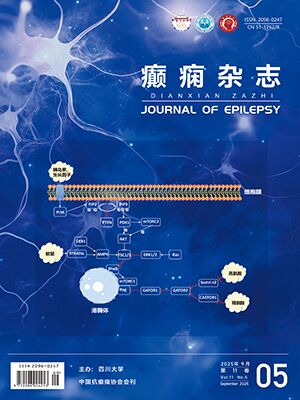| 1. |
Hall JA, Georgel PT. CHD proteins: a diverse family with strong ties. Biochem Cell Biol, 2007, 85(4): 463-476.
|
| 2. |
Carvill GL, Mefford HC. CHD2-related neurodevelopmental disorders. In: Adam MP, Ardinger HH, Pagon RA, et al. eds. GeneReviews®. Seattle (WA): University of Washington, Seattle; December 10, 2015.
|
| 3. |
Chénier S, Yoon G, Argiropoulos B, et al. CHD2 haploinsufficiency is associated with developmental delay, intellectual disability, epilepsy and neurobehavioural problems. J Neurodev Disord, 2014, 6(1): 9.
|
| 4. |
Capelli LP, Krepischi AC, Gurgel-Giannetti J, et al. Deletion of the RMGA and CHD2 genes in a child with epilepsy and mental deficiency. Eur J Med Genet, 2012, 55(2): 132-134.
|
| 5. |
Wilson MM, Henshall DC, Byrne SM, Brennan GP. CHD2-Related CNS Pathologies. Int J Mol Sci, 2021, 22(2): 588.
|
| 6. |
Petersen AK, Streff H, Tokita M, et al. The first reported case of an inherited pathogenic CHD2 variant in a clinically affected mother and daughter. Am J Med Genet A, 2018, 176(7): 1667-1669.
|
| 7. |
Liu JC, Ferreira CG, Yusufzai T. Human CHD2 is a chromatin assembly ATPase regulated by its chromo- and DNA-binding domains. J Biol Chem, 2015, 290(1): 25-34.
|
| 8. |
Lamar KJ, Carvill GL. Chromatin remodeling proteins in epilepsy: lessons from CHD2-associated epilepsy. Front Mol Neurosci, 2018, 11: 208.
|
| 9. |
Scheffer IE, Berkovic S, Capovilla G, et al. ILAE classification of the epilepsies: Position paper of the ILAE Commission for Classification and Terminology. Epilepsia, 2017, 58(4): 512-521.
|
| 10. |
Thomas RH, Zhang LM, Carvill GL, et al. CHD2 myoclonic encephalopathy is frequently associated with self-induced seizures. Neurology, 2015, 84(9): 951-958.
|
| 11. |
Meganathan K, Lewis EMA, Gontarz P, et al. Regulatory networks specifying cortical interneurons from human embryonic stem cells reveal roles for CHD2 in interneuron development. Proc Natl Acad Sci USA, 2017, 114(52): E11180-E11189.
|
| 12. |
Shen T, Ji F, Yuan Z, Jiao J. CHD2 is required for embryonic neurogenesis in the developing cerebral cortex. Stem Cells, 2015, 33(6): 1794-1806.
|
| 13. |
Isom LL. Opposing phenotypes in dravet syndrome patient-derived induced pluripotent stem cell neurons: Can everyone be right? Epilepsy Curr, 2017, 17(4): 244-247.
|
| 14. |
Marsh E, Fulp C, Gomez E, et al. Targeted loss of Arx results in a developmental epilepsy mouse model and recapitulates the human phenotype in heterozygous females. Brain, 2009, 132(Pt 6): 1563-1576.
|




